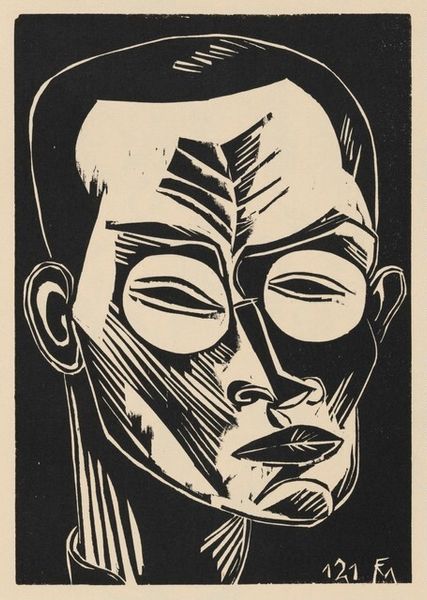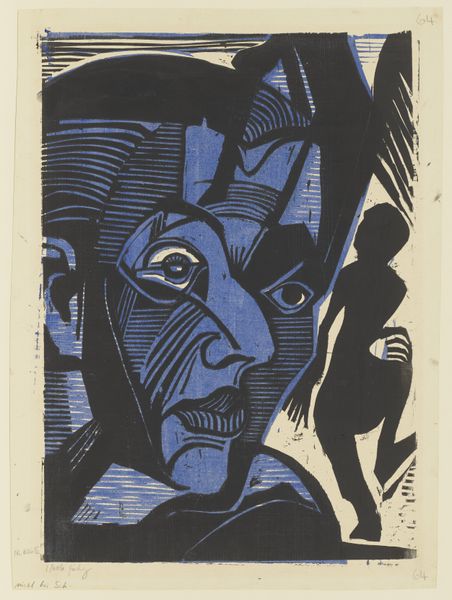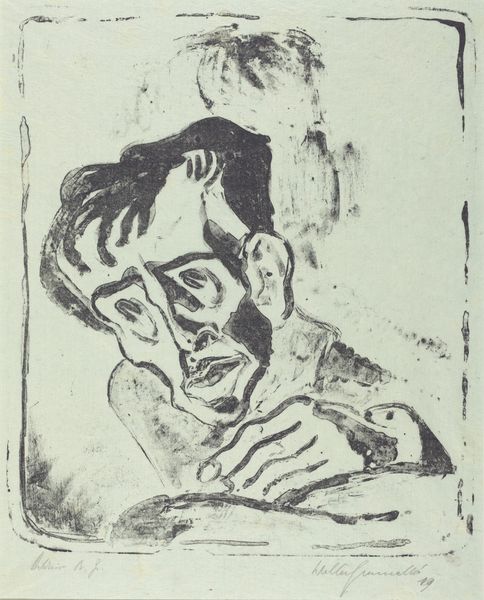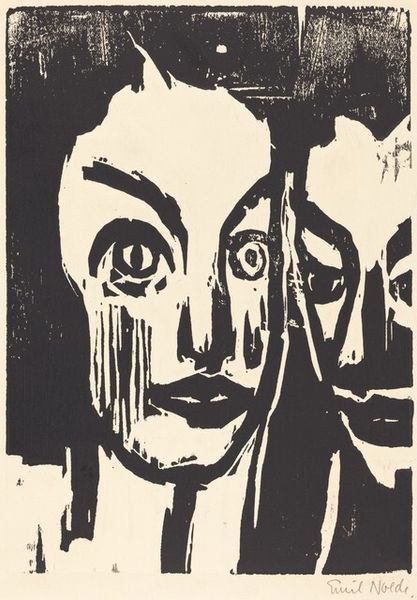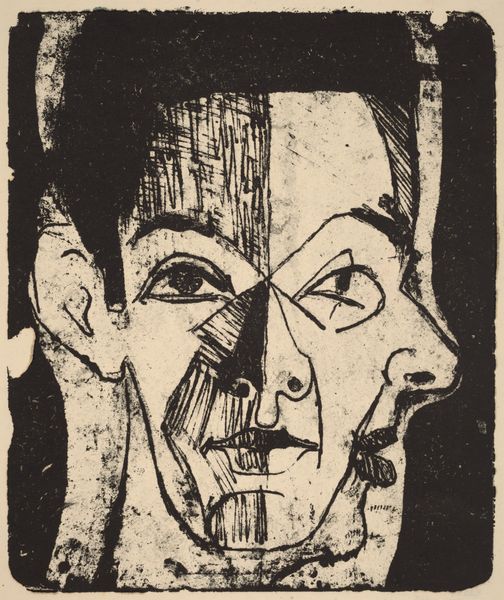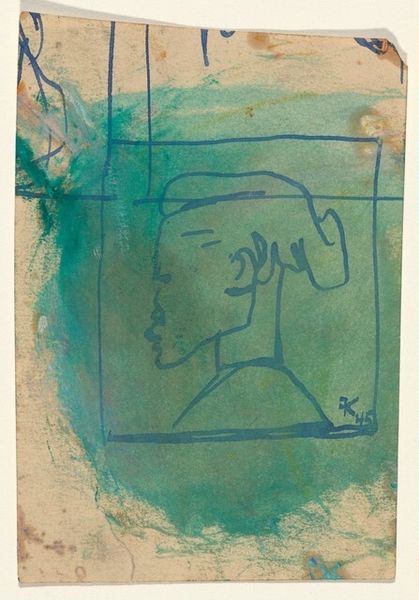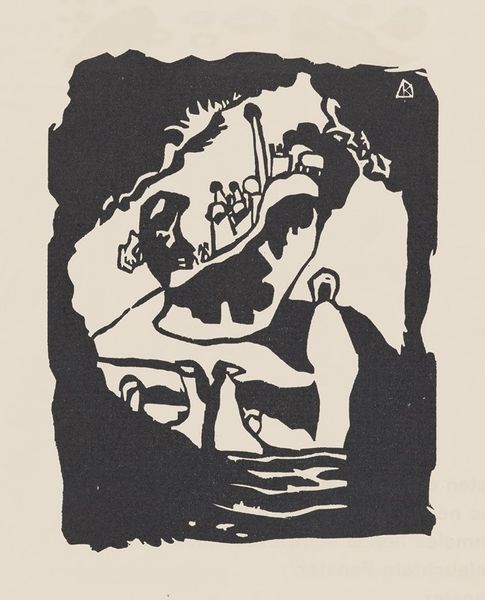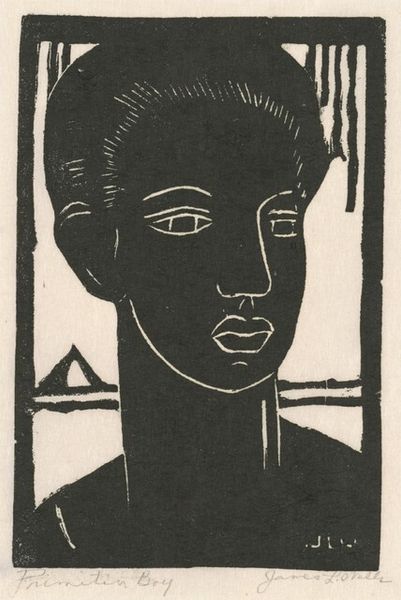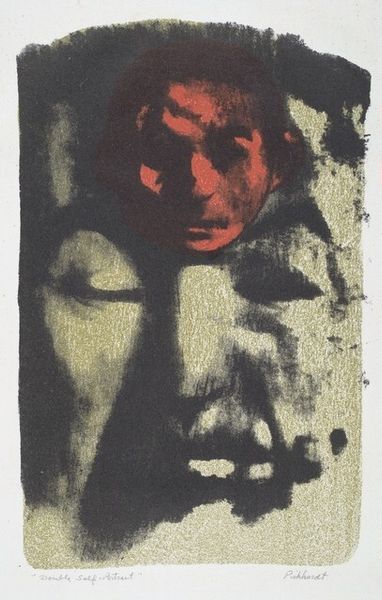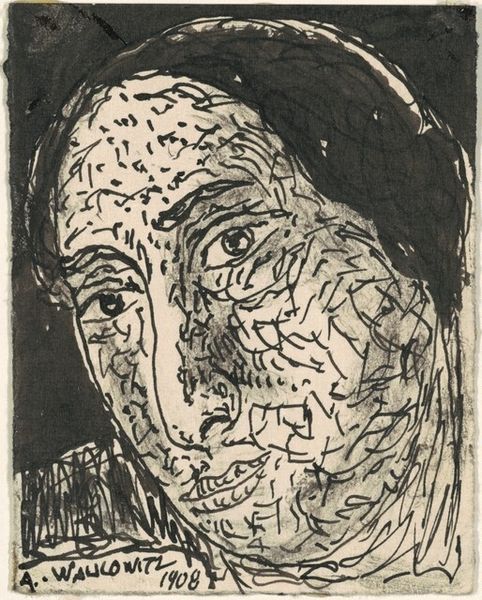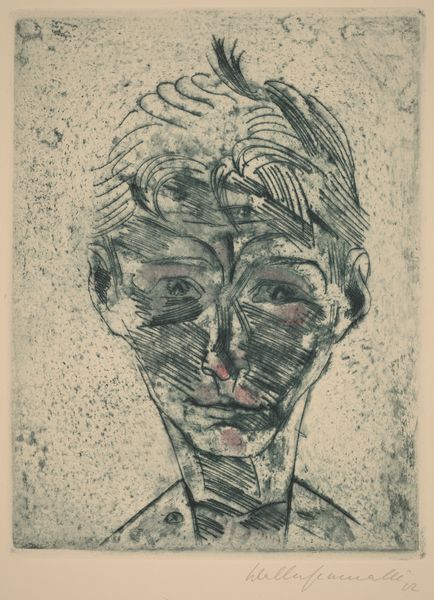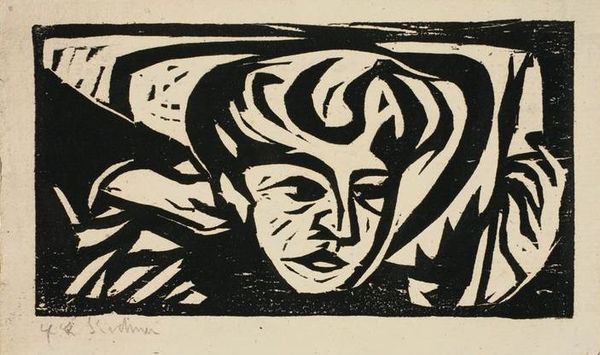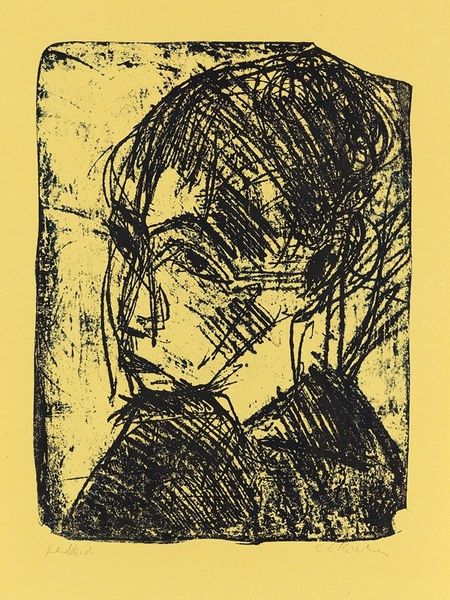
print, linocut
#
portrait
#
abstract-expressionism
# print
#
linocut
#
linocut print
#
geometric
#
modernism
Dimensions: image: 30.9 x 24.5 cm (12 3/16 x 9 5/8 in.) sheet: 46.2 x 31.1 cm (18 3/16 x 12 1/4 in.)
Copyright: National Gallery of Art: CC0 1.0
Editor: So this is Milton Avery’s “Head” from 1955, made with linocut. It's primarily blue and white. The color palette and graphic style make it really striking, almost like a woodcut in its boldness. How do you read its form and composition? Curator: I am interested in its intrinsic qualities. We have here a striking exercise in simplification and line. Observe how Avery reduces the facial features to their barest geometric essentials: triangles for the eyes, curved lines to evoke volume without shading, and stark use of figure-ground relationship. How does that interplay contribute to your understanding? Editor: It’s interesting how much expression he gets out of so little. The simplified form is really emphasized with that solid blue contrasting sharply against the negative space of the white lines. I wonder about his decision to reduce form to these most basic elements? Curator: Precisely! The essence, the form. Avery isn't trying to capture likeness but to construct a visual language around portraiture, to present his interpretation of personhood rather than represent any given subject. We could analyse the tension in the relationship between positive and negative spaces or that flattening of form. Would that yield anything interesting? Editor: Yes, I think focusing on the figure-ground relationship reveals the tension he creates. It is not the depiction of any actual “head” at all, rather an intellectual exercise about defining what we know about portraits. What else grabs your attention? Curator: The flatness of the single color field against the mark-making. The tension in that combination of formal reduction with material process…The composition becomes self-referential, no longer dependent on external factors for meaning. How does the visible "Artist's Proof" affect our perception of the work? Editor: That is an interesting layer; it almost reinforces how it is the artist, not necessarily the subject that the work aims to investigate. Thanks, I now understand it differently! Curator: I concur! We appreciate the way in which the image’s visual construction embodies the spirit of formal abstraction, stripping bare representation in pursuit of basic aesthetic truths.
Comments
No comments
Be the first to comment and join the conversation on the ultimate creative platform.
